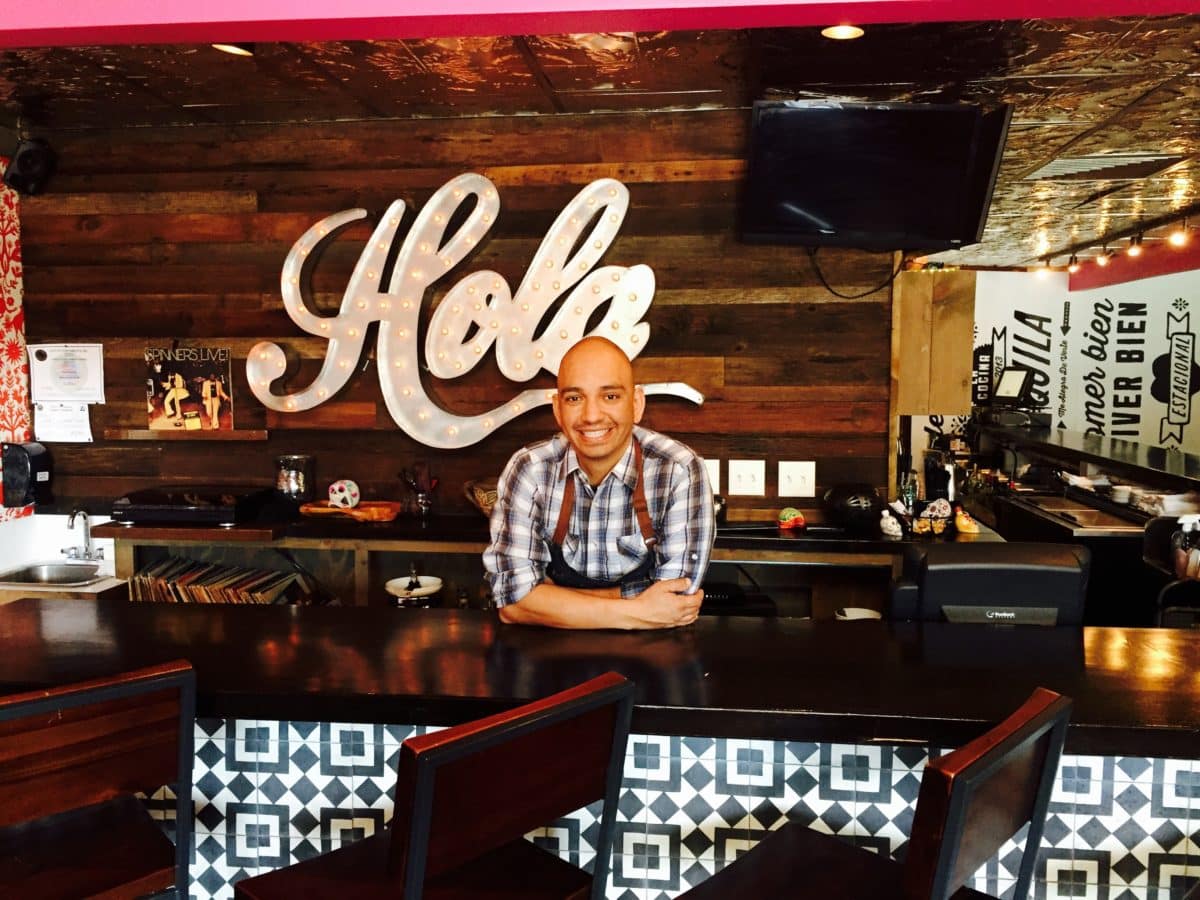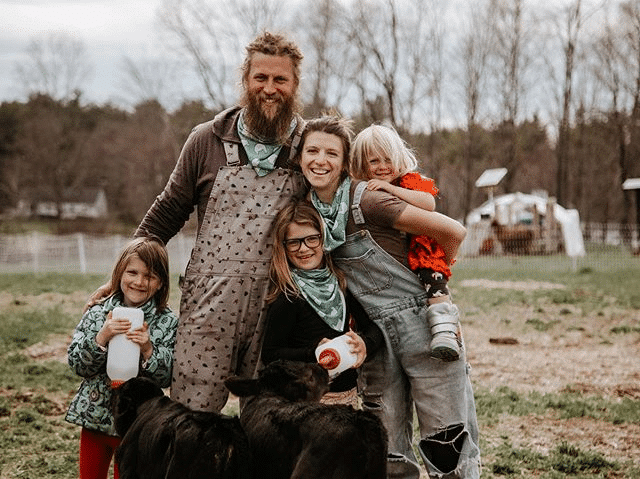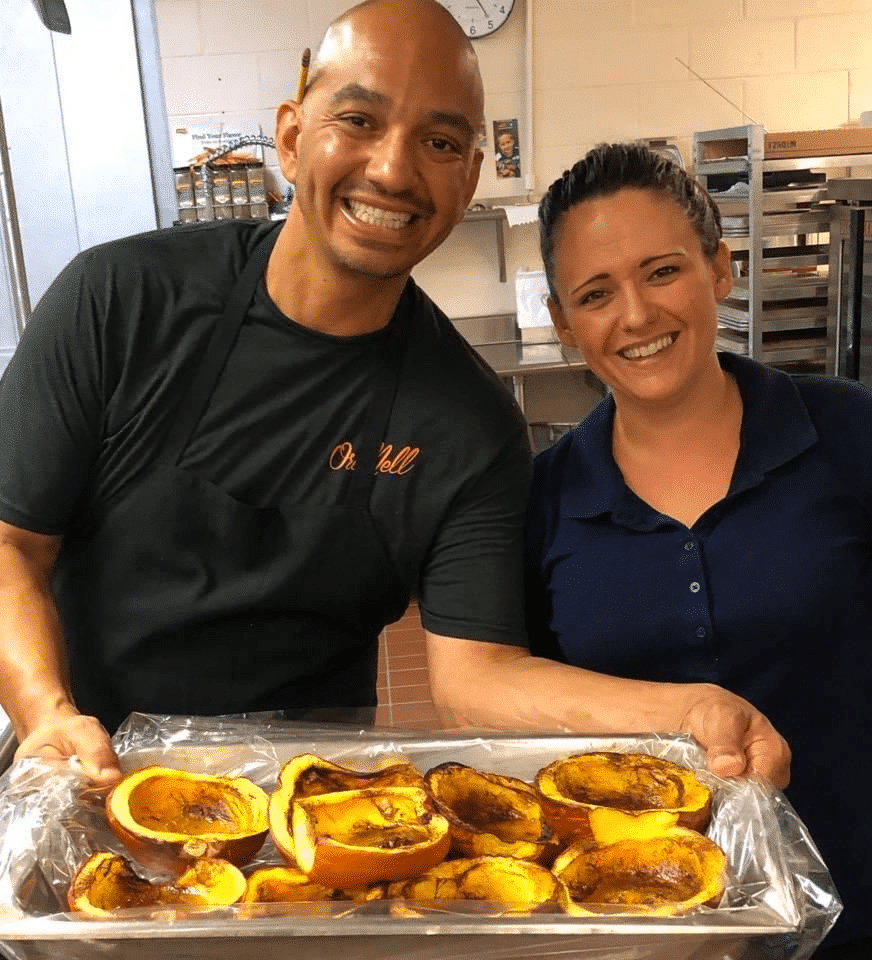Chef David Vargas Teaches Children to Love Fresh Farm Food
International Chefs Day is commemorated once again on October 20, a day when chefs all over the world celebrate their work and contributions to the community. Educating future chefs is part of the mission of the World Association of Chefs’ Societies (Worldchefs), the 100-year old organization that established ICD in 2004 as well as to educate people about the importance of healthy food. This year’s campaign theme is “Healthy Food for the Future!” which stresses the importance of teaching youth not only how to eat healthfully, but to ensure that the way we eat contributes to sustaining local food sources.
Chef David Vargas understands the importance of teaching kids how to eat healthfully and deliciously. The chef/owner at Vida Cantina, a modern Mexican restaurant in Portsmouth, New Hampshire, Vargas works with the Kittery, Maine school system to link local chefs, farms and school cafeterias through a Chef-to-School Series. He recently had a meeting with the Kittery Land Trust about their Farm-to-School program.
“They’ve been granted land and their hope is to continue to grow their garden and really introduce these kids to not only vegetables and proteins, but showing them where food comes from,’ said Vargas. “I take it for granted as somebody who grew up with their parents cooking from scratch. There are a lot of people that just don’t understand food at all; how it’s grown, where it comes from, where something as simple as your herbs come from and how to introduce that into your daily life.”

Vargas, who grew up in his family’s California taqueria, came into the Kittery schools to help school district staff be able to introduce fresh foods into the school lunch program and to show students just how delicious fresh farm food can be. His first experience, he said, was an eye opener.
“The very first time they asked me to come cook in the school, they asked me to make chicken parmesan. I was super excited to come in that day. They said, “‘Okay, the chicken’s in the freezer, go ahead and grab it out.’ It was Tyson chicken patties that they were using. My jaw dropped. I thought ‘Wait, this is how we’re making chicken Parmesan? We can’t do this.”
The chef’s first call was to Jeremiah Vernon at Vernon Family Farms in Newfields, NH. The farm supplied the school with non-GMO, pastured chicken to use instead.


“Jeremiah grows the best chicken in New Hampshire and it’s not cheap, but he donated it so we could teach the kids what chicken actually tastes like and what the resources are behind it, why it’s important to source something like this.“
Both kitchen staff and students alike were impressed.


“We blew the socks out of this chicken Parmesan because we started with great product to begin with. It takes a whole community. The farm donating to the program will help educate these kids and hopefully they’ll let their parents know, ‘Hey, this chicken is good!’ And one chicken can go a long way — using the legs for pulled chicken, using the breast for chicken Parmesan, using the bones for stock — all educating them to the fullest.”
Vargas recently became the substitute Kittery School Nutrition Director for the district and will continue to help bring a fresh food, local-sourcing focus to the program. His own Vida Tortilla corn tortillas are made from corn grown on New Hampshire’s Tuckaway Farm. The organic flint corn is made into masa which becomes the tortillas used at Vida Cantina, Dos Amigos Burritos and available to the public.


The chef hopes to be able to continue to help students, teachers and kitchen staff understand where their food comes from and how to use it.
“There’s not a lot of money granted to nutrition programs to be able to do these programs,” said Vargas. “It really is going to take a whole community to make something like this happen. People like the Kittery Land Trust, the Heirloom Harvest Project, Slow Food, all the local farms — to be able to take time to educate the next generation of farmers and chefs.”
Last year’s Chef-to-School program is one example of community contribution. Chefs were able to show students varieties of pumpkin, corn and tomatoes, fresh farm foods not surrounded by plastic wrap and styrofoam.

“We can show them that these vegetables come from the ground, how they grow and why they taste so different. We can show them why they should support this type of food, not only buying it but cooking for yourself and the health benefits behind it as well.”
Unfortunately, school systems often can’t financially support programs that offer farm food or school gardens and that community contribution is even more in demand.
“During the pandemic, we opened up the program for free lunches and free meals for all kids under 18 in the town of Kittery. You don’t even have to be registered into the school system because a USDA government program has allowed that. That means there’s more government food being trucked into the nutrition program. If we want to introduce these types of fresh food, we’re really relying on programs like the Kittery Land Trust, our own school gardens and other various programs that are out there.”
Vargas notes that there are gardens at many local schools, including the high school in Kittery which operate a farmers market throughout the growing season. He hopes that students graduating can continue to educate the community and themselves.
“Hopefully they can change perspectives in our small communities so they offer these things. A community garden can feed so many people in a certain area. Maybe we have tomato seeds and you can come every Saturday and pick up two pounds for your household. That does a lot. Those simple things can offer a lot. We can set up our land, our streets so that there’s actually more free trees and we can pick from these fruit trees. I’m looking at things like that. People are buying up land and building on it, but if you think about sustainability for our community itself, if we can think ‘small’ then hopefully it will chain react ‘big’.”
More community support and government programs in schools and communities can help change the way children eat. Instead of growing up eating hot dogs and frozen foods, kids can know what it tastes like to have a real tomato or a fresh piece of corn, said Vargas.
“If we can buy land and build community gardens and get government programs to help fund those things as well, we can make a difference for our community and then our children as well.” ![]()

